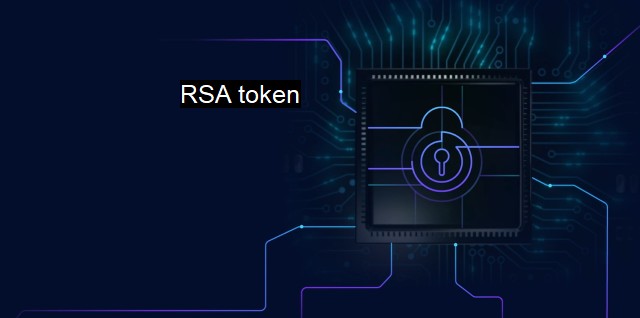What is RSA token?
Examining the RSA Token and Anti-Virus Systems: A Comprehensive View of Cybersecurity in the Digital World
An RSA token refers to a device or software application that generates a number sequence, often referred to as the RSA SecurID token code, used in the two-factor authentication system for securing access to network and database systems. It plays a key role in rectifying one of the most crucial problems in designing secure systems, assuring the authenticity of an entity on a network. Given that the question pertains not only to cybersecurity but also to antivirus, it is important to understand the RSA token functioning from multiple perspectives.RSA tokens incorporate a dual-pronged structure while confirming an identity. The first protocol verifies something an entity knows, usually a password or PIN. The second confirms something an entity has, specifically the RSA token, which generates a random code at regular intervals. This dual-level alphanumeric is then incorporated on the server-side during the login process, ensuring that merely knowing a password isn’t sufficient to gain unauthorized access.
The prime benefit of using an RSA token for system or network security lies in its being invulnerable to password-related threats such as hacking, phishing, and keylogging. The time-sensitive nature of the numeric code generated by these tokens significantly reduces the opportunity for compromise, providing a high assurance level for identity confirmation and access approvals.
Thanks to RSA tokens, a physical device isn't needed, unlike traditional two-factor authentication systems. The RSA token software can be installed on smartphones or other remote devices, leading to greater agility and convenience while maintaining the required security levels.
The technology behind the SecurID operates on an asymmetrical algorithm. It works on a matched pair of different keys, a public one used by all for encryption and a private key for decryption. The association of any data with these keys allows its secure transmission, irrespective of the medium. Despite being visible, peeping at this data would make no sense, except to someone having the particular private key used in the encryption process.
Similar to other revolutionary technologies, the RSA system does come with certain vulnerabilities. The algorithmic reliance of this system on prime number theory highlights its susceptibility to so-called 'quantum attacks'. The capacity of quantum computers to factor large numbers can potentially break the RSA protocol. Nuances of aliasing attacks, a sophisticated version of brute-force attack where intruders try different secret identification numbers, also persist.
Hence, the advent of RSA tokens has brought about an immense transformation in the scope of cybersecurity. the world of cybersecurity is not static, thereby compelling companies to enhance their strategies continuously. Also, like antivirus software shields data and systems from malware, RSA token also secures identities from theft. The use of tokens empowers organizations to administer tighter security controls and manages to strike the elusive balance between enhancing user experience while restricting unwarranted intrusions.
Consequently, based on its robustness and exclusive security features, the RSA token holds a critical position in the cybersecurity architecture. It guards not only the confidentiality of data but its integrity and authenticity as well, much like good antivirus software does.
While RSA tokens' functionality extends to authenticating an individual's privileged access, antivirus software acts as a protective wall against any dodgy data entering your system. Combined, both these solutions act as the first line of defense in ensuring that the information we deeply rely on in the digital age continues to remain secure and trustworthy. RSA tokens form an essential tool in cybersecurity layered strategy, with their time-bound, dynamic passcodes offering critical protection beyond the standard username-password infrastructure.

RSA token FAQs
What is an RSA token?
An RSA token is a small electronic device used to generate one-time passwords for authentication. It is commonly used in cybersecurity as a form of two-factor authentication to protect sensitive information.How does an RSA token work?
An RSA token uses a mathematical algorithm to generate a unique, time-dependent code that changes every minute. This code, in combination with a username and password, is used to verify the user's identity and grant access to a secure system or application.Why is an RSA token important in antivirus software?
An RSA token adds an extra layer of security to antivirus software by requiring users to authenticate their identity before accessing the software or any sensitive data. This helps to prevent unauthorized access and reduces the risk of data breaches or cyber attacks.How can I get an RSA token for my cybersecurity needs?
You can typically obtain an RSA token through your employer or by contacting an authorized RSA vendor. The token is often provided with instructions on how to set it up and use it for secure authentication.| | A | | | B | | | C | | | D | | | E | | | F | | | G | | | H | | | I | | | J | | | K | | | L | | | M | |
| | N | | | O | | | P | | | Q | | | R | | | S | | | T | | | U | | | V | | | W | | | X | | | Y | | | Z | |
| | 1 | | | 2 | | | 3 | | | 4 | | | 7 | | | 8 | | |||||||